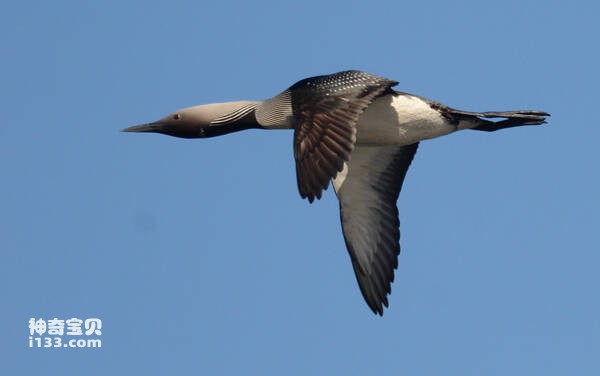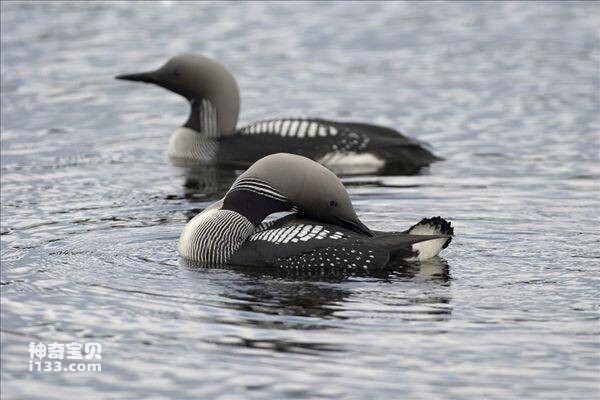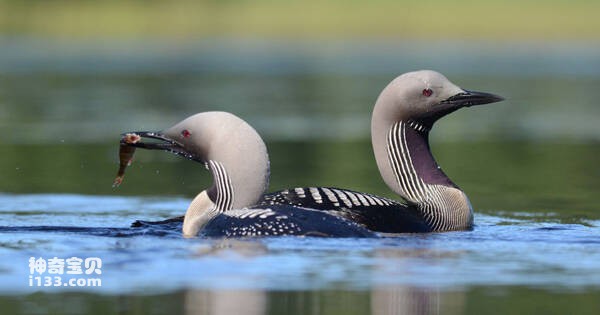Gavia arctica
IUCN
LCBasic Information
Scientific classification
- name:Gavia arctica
- Scientific Name:Gavia arctica,Arctic Loon,Black-throated Diver,Black-throated Loon
- Outline:Waterfowl
- Family:
Vital signs
- length:56-76.5CM
- Weight:2.37-3.793kg
- lifetime:No textual research information is available
Feature
The individual is larger than the red-throated loon, with a straight beak and a thick, long neck, often curved into a graceful S-shape
Distribution and Habitat
It breeds in northern Eurasia, up to the subarctic and Arctic regions, south to the central Soviet Union, Issek Lake, Balkhash Lake, Altai, Mongolia and China's Xinjiang, Heilongjiang, Jilin Changbai Mountains and Far East, Sakhalin Island, eastern Siberia, and east to Alaska in North America. Wintering in central Europe, the Mediterranean Sea, the Black Sea, the Caspian Sea, Japan, California and China's Liaodong Peninsula, Fujian, Taiwan and other southeast coastal areas.
Native distribution: Lithuania, Macedonia, the former Yugoslavia, Mexico, Moldova, Mongolia, Montenegro, Netherlands, Norway, Poland, Romania, Serbia, Slovakia, Slovenia, Spain, Svalbard and Jan Mayen, Sweden, Switzerland, Taiwan of China, Turkey, Turkmenistan, Ukraine, United Kingdom, United States.
Distribution: Algeria, Armenia, Faroe Islands, Gibraltar, Israel, Jordan, Luxembourg, Morocco, Portugal.
Undetermined distribution: Monaco.
The black-throated loon breeds in inland lakes, rivers,
Appearance
Black-throated loon has gray forehead, head and hind neck, and gray-black cheeks. The shoulders and back are black, with blue-green luster, and the two sides of the upper back and shoulders have rectangular white spots arranged in tile sheets; The waist feather color is light; The wings are covered with black feathers with small white spots; The two wings are dark brown, the outer web and the end are darker and glossy; The tail is short and black. Chin, larynx and foreneck are black with green luster, and there is a discontinuous white transverse band between lower larynx and foreneck; The neck side and the chest side are black, but all feathers have wide white longitudinal stripes on both sides, so the black and white longitudinal stripes are formed on the neck side and the chest side. The rest of the lower body is white, the two sides are black, and the two rear sides are white. The upper body of the winter feathers is black, the crown and the back neck are black-gray, the tail feath
Details
The Black-throated Loon (Gavia arctica) is a large waterfowl known as the Arctic Loon, Black-throated Diver, or black-throated Loon. As for the subspecies differentiation of the black-throated loon, some scholars have divided it into three subspecies, namely the black-throated loon named subspecies G.A.rctica, the black-throated loon northern subspecies G.A.Iridigularis, and the black-throated loon Pacific subspecies G.A.acifika. However, some scholars believe that the Pacific subspecies has overlapping breeding areas without intermediate types, so it should be an independent species, so it is only divided into two subspecies, namely the named subspecies and the northern subspecies. The northern subspecies is found only in China, breeding in Xinjiang, Heilongjiang and Jilin.

Black-throated loons often travel in pairs or small groups. Good at swimming and diving, swimming neck often bent into an S shape. Often fly in a straight line, strong ability, fast and powerful, head and neck straight, feet straight after the tail, two wings flap quickly, but can not change speed. Water take-off is more difficult, and requires a distance of water run-up to take off, so generally do not like to perch in small ponds. It is impossible to take off on land, and it is difficult to walk, usually crawling forward, so it is generally not on land except during the breeding season. Living on the water all day, he escapes by diving when in danger, sinking his body deep in the water with only his head and neck above the surface.
Black-throated loon feeds mainly on various fish, but also on dragonflies and their larvae, beetles and larvae, crustaceans, mollusks and other aquatic insects and invertebrates. Food is found mainly by diving, but also by running across the water to hunt fish. A dive time can be as long as 90-120 seconds, diving distance of more than 400 meters. The black-throated loon's call is a repetitive croak like a snore and a gull-like aah-oww.

Black-throated loon spring migration occurs in mid to late April and reaches breeding grounds at different latitudes from early to late May. Autumn migrations begin as early as late September, with large numbers occurring in early to mid to late October, often slowly along coasts, rivers or lakes. The named subspecies mainly migrate from east to west, and the northern subspecies mainly migrate south. The migration distance is about 6000 km. Most migrate in pairs.
Black-throated loons usually arrive at breeding sites in pairs, and the pair's combination and breeding site are relatively fixed. Breeding season is from May to July in Changbai Mountain. From mid-May to early July, several single and paired black-throated loons were seen in the upper forested rivers of the Teatou River, Linjiang River and Yalu River in Changbai Mountain, indicating that they would breed in Changbai Mountain. The breeding season starts later the further north you go, and in the Arctic tundra breeding does not begin until June.

The nest is built in the grass on the ground near the water's edge, and the nest is very simple, made of some dead grass piled up, and some even only slightly trampled. The size of the nest is 50-60 cm and the height is about 10 cm. There are also floating nests built with the support of aquatic plants and hay in the waterside emergent plant cluster. Each litter lays 1-2 eggs, occasionally up to 3 eggs. Eggs are olive brown with black and dark gray spots; The size of the eggs is 75-95 mm x 45-46 mm, with an average of 84.5 mm x 51.74 mm. If eggs are lost or reproduction fails, compensatory eggs are usually produced. After the first egg is produced, the incubation begins, which is shared by the male and female birds, and the incubation period is 25-29 days. Young birds early sex, under the lead of the parent bird, after about 40 days of fledgling life is able to fly.
Black-throated loon was only occasionally found in Liaodong Peninsula and Fuzhou in China in the past, and is a rare winter migratory bird and traveler bird. Since 1983, many specimens have been seen and collected in Changbai Mountain during breeding, which indicates that it may breed in Changbai Mountain of China. Taiwan Province also captured one animal between 1970 and 1971. In 1992, the International Waterfowl Research Bureau organized a survey of Asian midwinter waterbirds, only two were seen in China, the number is quite rare, need protection. In 2006, Wetlands International estimated the global population of the black-throated loon at 280,000-1,500,000 individuals. In 2009, there were about 100-1,000 pairs of adult birds and 1,000-10,000 individuals wintering in Russia.
During the breeding season, black-throated loins are threatened by acidification, heavy metal pollution and fluctuating water levels in breeding areas, especially during incubation. Due to human interference and changes in breeding sites, black-throated loon fertility has declined. During the winter, black-throated loons are extremely vulnerable to coastal oil spills, especially in hot development areas. In addition, fishing nets in the water can become entangled and drown the black-throated loon, and coastal wind farms can disrupt the life of the black-throated loon, and the black-throated loon is also vulnerable to avian influenza virus outbreaks.
On January 12, 2020, a black-throated loon was found in Xinglong Lake. It is a new bird record in Sichuan Province. It is reported that the black-throated loon nesting in the Arctic and sub-Arctic tundra and island inland lakes, winter habitat in coastal sea, bay and estuary areas, has never been observed in Chengdu. The appearance of the black-throated loon in Xinglong Lake is a significant discovery, which to a certain extent confirms that Chengdu's ecological environment is getting better and better. In January 2023, the staff of Taishan Scenic Area Management Committee in Shandong Province found black-throated loon during the survey of wild birds in Taishan in winter.
It has been included in the List of Land Wildlife that are beneficial or of important economic and scientific research value under State Protection issued by the State Forestry Administration of China on August 1, 2000 (Item 2).
It has been included in the "China Red List of Species" (2004), assessment grade - non-threatened species (LC).
It is listed on the IUCN Red List of Threatened Species (IUCN) 2018 ver 3.1 - Species not at Risk (LC).
Protect wild animals and eliminate wild meat.
Maintaining ecological balance is everyone's responsibility!








